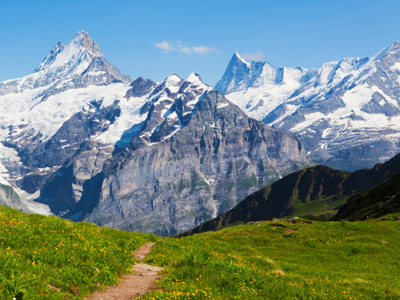
Chemistry - Earth's Crust (AQA)
In GCSE Science students will look at the chemical changes which have taken, and do take place on the Earth and in its atmosphere. This is the first of three quizzes on that topic and it looks specifically at the Earth's core and mantle, and at the plates which form the Earth's crust.
The Earth has a layered structure, from the core at its centre, then the mantle above the core, and finally the outer layer, the crust which is divided into several tectonic plates. The crust provides a lot of the raw materials that are used to make things we use and take for granted every day, such as metals, stones and oil. The surface of the Earth is slowly changing but these geological changes are slow, taking tens of thousands of years to become noticeable.
"If we are to believe in Wegener's hypothesis we must forget everything which has been learned in the past 70 years and start all over again."
It turned out that he was absolutely right but by the time the theory was accepted it was more like forgetting everything that had been learnt in the last 120 years than the last 70!
Where the _______ meet, the Earth's crust becomes unstable as the plates push against each other, or ride under or over each other. __________ and volcanic eruptions happen at the _________ between plates, and the crust may ‘crumple’ to form __________ ranges.
Ready for more?
not all...
quizzers. Try to win a coveted spot on our Hall of Fame Page.







